Research Facilities
The main facilities are listed below. We also have a number of smaller scale facilities, eg smaller wind tunnels, and a variety of measurement equipment attached to them. Please contact the members of staff for more information.
Durham Blowdown Facility and Rotating Test Rig
The Durham University Blowdown Facility is capable of delivering a maximum air speed of Mach 5. Dried air with a maximum pressure of 31 bar gage is stored in a 10 m3 air receiver. The air can be connected via a control valve to a number of rigs, housed in an adjacent hardened test cell. The hardened test cell can be used independently of the blow down facility for other high energy testing. A selection of control hardware, instrumentation and data acquisition is available, which typically include: air mass flow rate, temperature, pressure, load cell, speed or displacement sensors. Bespoke rigs have included, static and rotating turbomachinery sealing test rigs for steam turbine and turbocharger applications and prototype engine testing.
Contact Person: Professor Simon Hogg
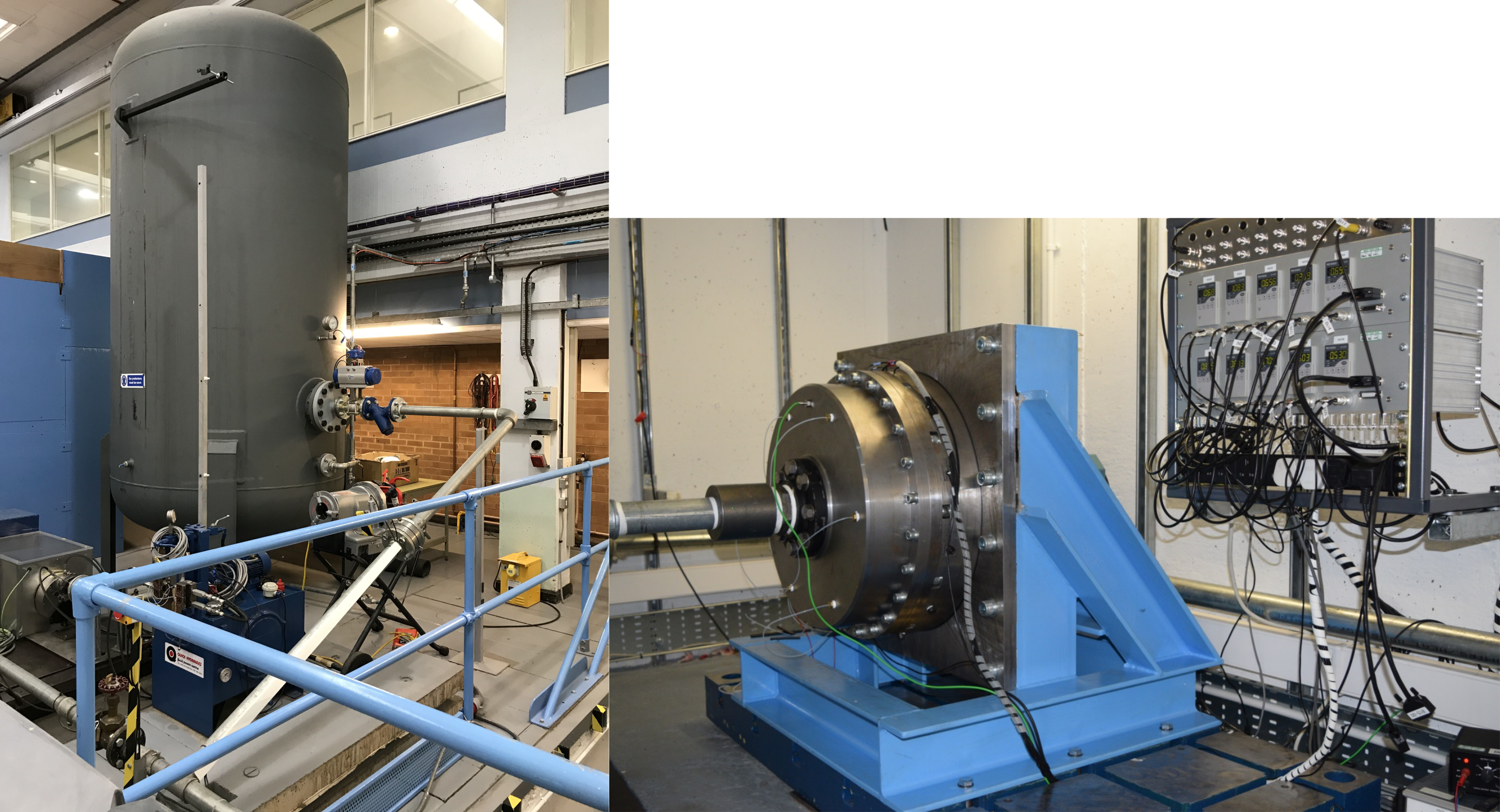
2-m Wind Tunnel
The Durham 2m wind tunnel in the Department of Engineering is the main research wind tunnel facility for performing state of the art turbomachinery and aerodynamics research. The wind tunnel is a member of SATA (Subsonic Aerodynamic Testing Association).
The range of test properties inlcude:
- Road Vehicles (up to 40% scale)
- Race Cars
- Rail Vehicles
- Aircraft (full and half models)
- Wind Turbines
- Sailing Vessels
- Long working section for multi-vehicle scenario
The wind tunnel is equipped with its own data logging and instrumentation system including
- Typical total facility repeatability: 0.002 on CD, 0.003 on CL
- 3 axis overhead probe traverse (multi-hole pressure probes, hot-wires etc)
- PIV (120 mJ laser on 2 axis traverse under floor)
- Various pressure scanning options
Contact Person: Professor David Sims-Williams
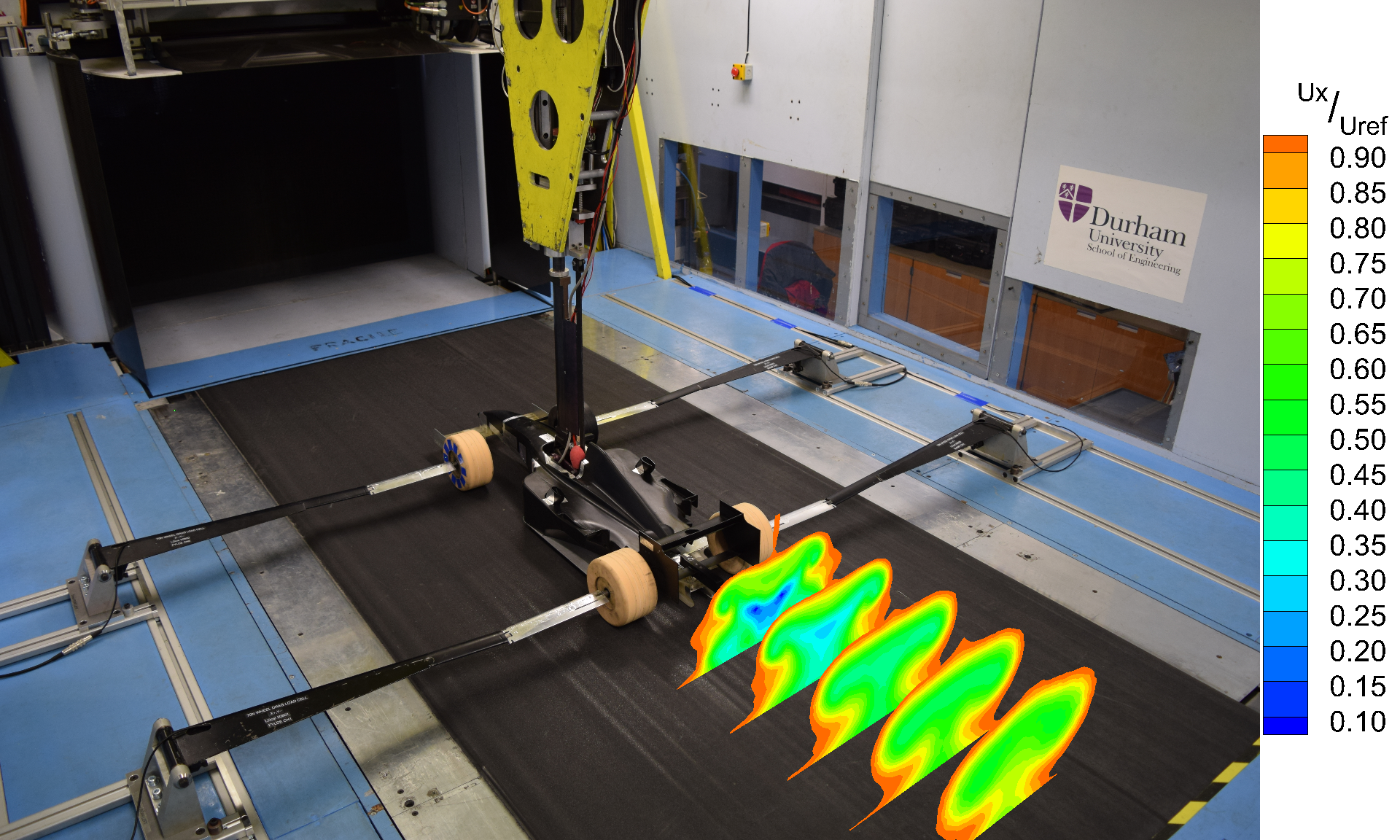
Recirculating Wind Tunnel
The recirculating wind tunnel in the Department of Engineering is the other main research wind tunnel facility for performing state of the art turbulence and aerodynamics research. Wind tunnel specification:
- testing section dimension: 550 mm x 560 mm x 2440 mm
- steady & low-turbulent wind speed in the testing section: 10 mph to 100 mph
The wind tunnel is equipped with its own data logging and instrumentation system including
- 3 axis overhead probe traverse (multi-hole pressure probes, hot-wires etc)
- PIV (120 mJ laser on 2 axis traverse under floor)
- Various pressure scanning options
Contact Person: Professor David Sims-Williams, Associate Professor Lian Gan
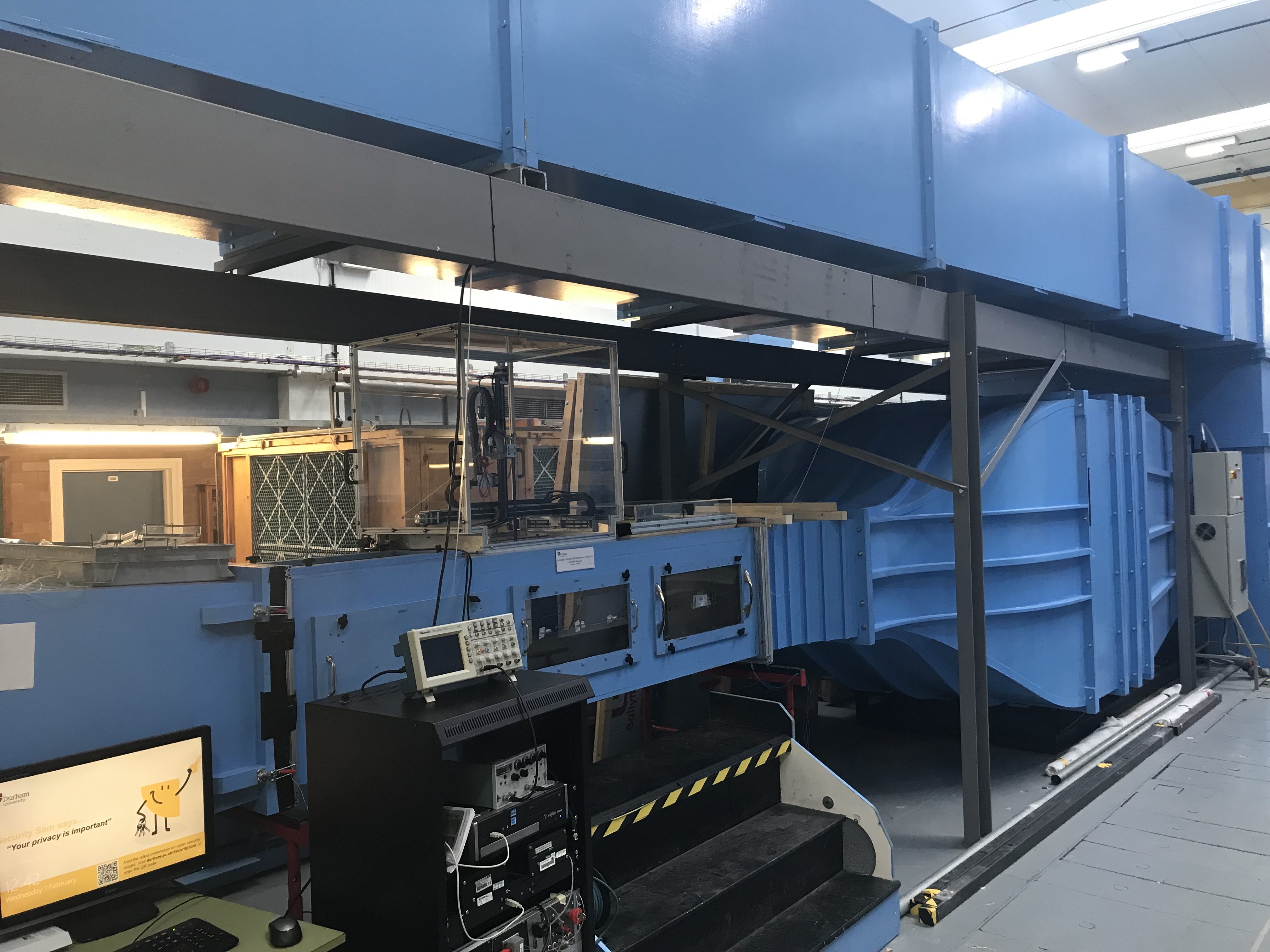
Multi-functional puff/jet generator
This is the only water based facility in Engineering, which can be used as a pulsatile jet generator, a continuous flow generator, and other complex momentum delivery functions (eg swirl). The nozzle exit geometry can be made of complex shapped fabricated by 3D printing for example. Complex confinement geometry can be attached. A towing function is also available.
- Dimension: 2.4m x 0.9m x 0.9m, glass tank with steel frames
- Programmable two-axis simultaneous motion controls
- Raw nozzle inner diameter: 40mm
- Re can be reached: order of 105
- Equiped with high-resolution stereoPIV (2xPhotron Fastcam WX100, 2x PCO), 2-camera TomoPIV, PLIF (5W CW laser), Newwave Solo laser (up to 120mJ per pulse)
Contact Person: Associate Professor Lian Gan
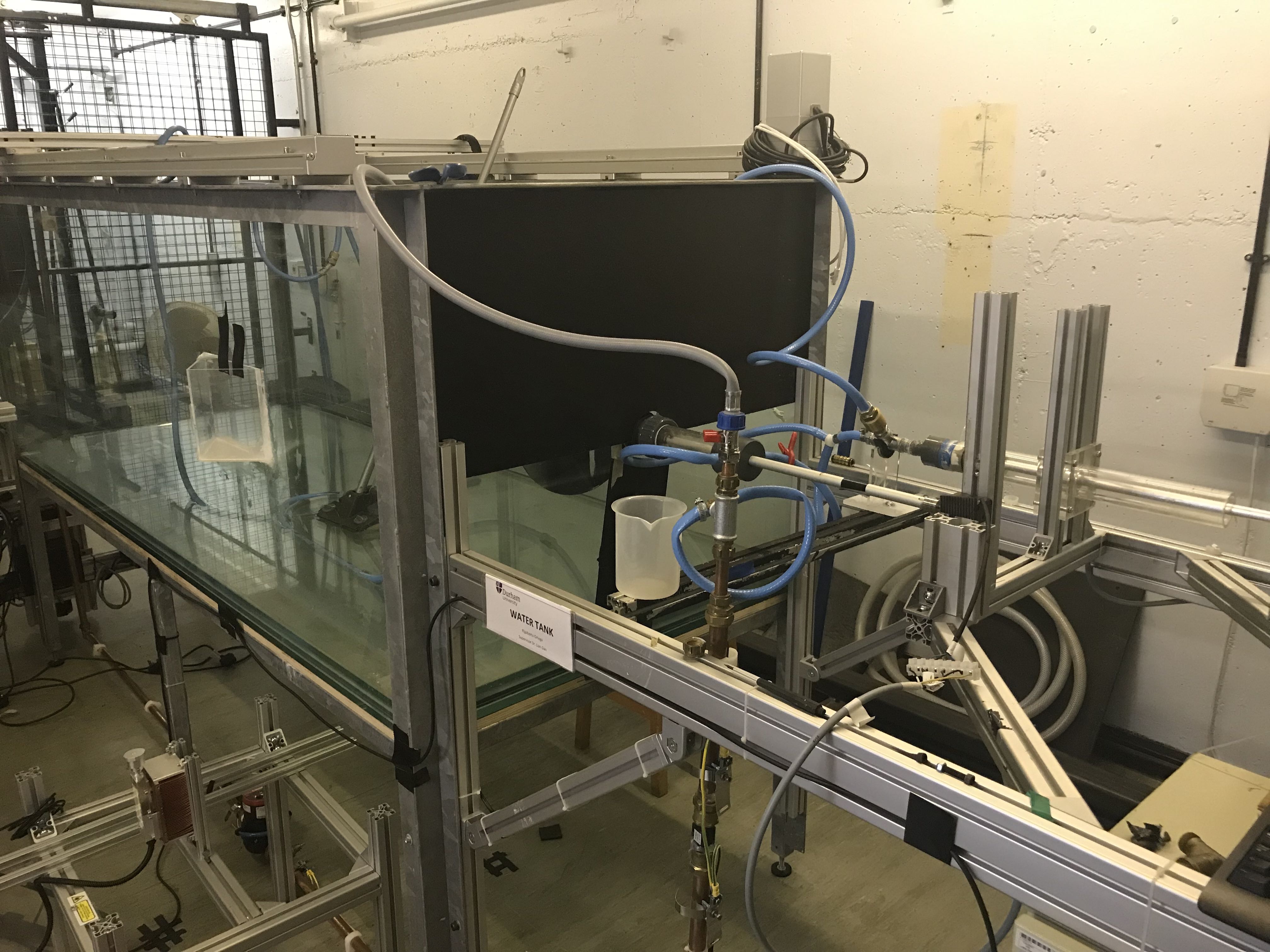
The Durham Cascade
The primary tool over many years at Durham for Secondary Flow research has been the so-called Durham Cascade is a low speed, large scale linear cascade of six rotor blades taken from a high pressure rotor design. The cascade has been a popular computational test case and is one of the most computed pieces of experimental equipment in the world, largely due to the fact that although the geometry is easy to set up the flow is highly complex. The Cascade has blade made with machined aluminium parts to improve geometrical accuracy and continues to be used with more sophisticated instrumentation to obtain further insights into loss development.
Specification:
- Model size: 8x full scale blade
- Typical blade size: 191mm pitch, 375mm span, 181mm chord
- Eight passages
- Inlet turbulence level 5%
- Inlet velocity 20m/s
Features include:
- 4 axis computer controlled traversing gear
- Blades machined from solid metal for highest geometrical accuracy
- Five hole pneumatic probes gives complete flow field information including
Contact Person: Associate Professor Grant Ingram

Smart Grid Laboratory
The Smart Grid Laboratory contains the Real Time Digital Simulator (RTDS) for conducting large-scale real-time power system simulations either on a stand alone basis or with physical systems in the loop (power hardware in the loop).
Contact Person: Professor Hongjian Sun

Durham Drum
The unique 1.8m diameter, 0.5m wide drum system can be close-loop controlled, which has ultra steady rotating rate and can be in continuous operation up to a month at a time. Specifications:
- Speed range 10-4-102 rpm
- Speed accuracy < 0.1%
- Operating lifetime >5,000 hours
- Mass of loaded drum up to 700 kg
The drum system is also equipped a Renishaw RESR which has 0.008 arc second resolution, a laser profile scanner and a high speed high resolution Phantom LAB camera.
Contact Person: Associate Professor Lian Gan, collaborating with Professor Jim McElwaine at Earth Science
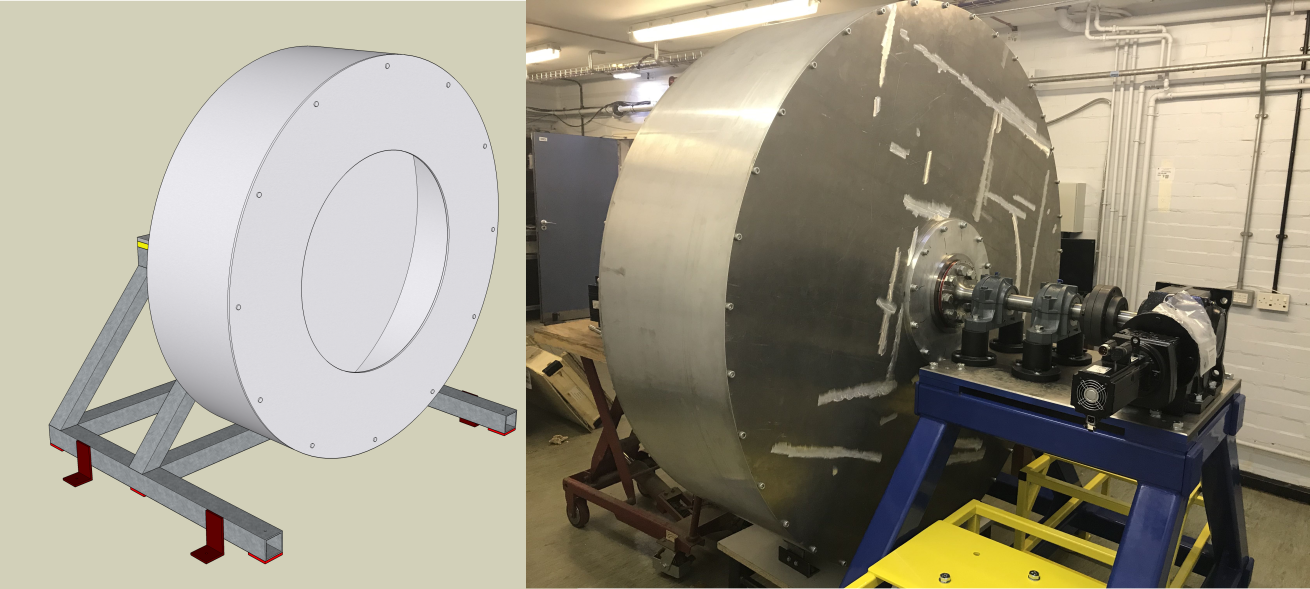


/prod01/prodbucket01/media/durham-university/departments-/engineering/74202-5112X1676.jpg)